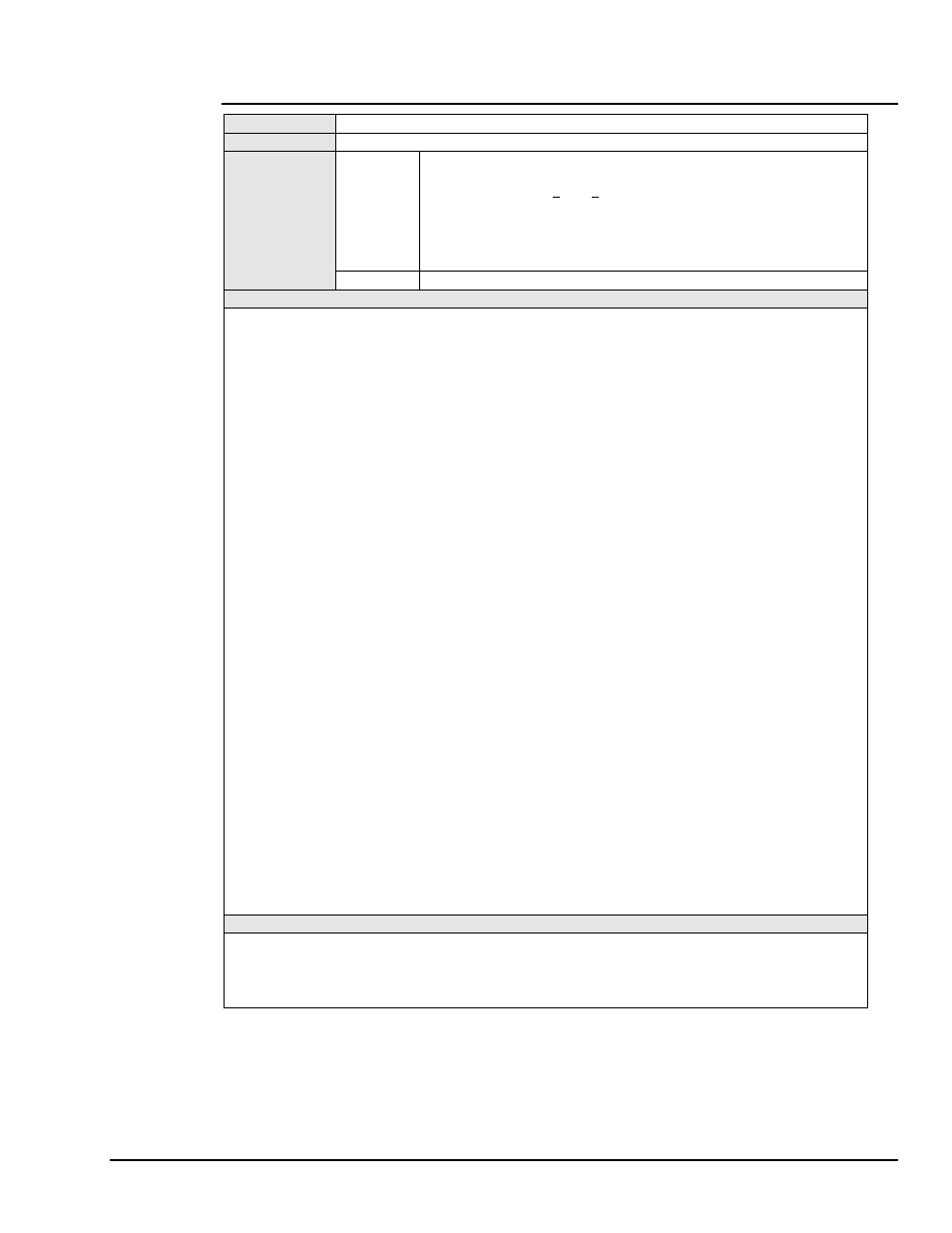Set srq mask – Measurement Computing TempScan/1100 User Manual
Page 239

TempScan / MultiScan User’s Manual
889897
API
Command Reference A-43
M
- Set SRQ Mask
TYPE
System
EXECUTION
Deferred
SYNTAX
Mmask
Use the IEEE 488 Service Request (
SRQ
) mechanism to inform the IEEE 488
controller of certain conditions, where
mask
is in the form of the number
nnn
such that
000
<
nnn
<
255
is summed from the following conditions:
128
– SRQ on Buffer Overrun
004
– SRQ on Ready
032
– SRQ on Event Detected
002
– SRQ on Trigger Event
016
– SRQ on Message Available
001
– SRQ on Alarm
008
– SRQ on Scan Available
000
– Clear SRQ Mask
M?
Query the SRQ mask.
DESCRIPTION
The Set SRQ Mask (
M
) command uses the IEEE 488 Service Request (
SRQ
) mechanism to inform the IEEE 488
bus controller of the existence of several conditions in the Service Request Enable Register (
SRE
). The bits in
the
SRE
represent an exact image of the bits in the Status Byte Register (
STB
) except for the Request for Service
Bit (
RQS
, Bit 6) or Master Summary Status Bit (
MSS
, Bit 6). When a condition is set in the
STB
, its image bit is
checked in the
SRE
. If the image bit is enabled, the unit will generate a Service Request (
SRQ
).
Multiple conditions can be enabled simultaneously. If multiple conditions are contained within the same command
string, each Set SRQ Mask (
M
) command should be followed by the Execute (
X
) command. Otherwise, since the
resulting SRQ Mask register value is the logical ORed value, or sum, of the individual values sent, the entire
summed value of all the desired conditions may be sent within one Set SRQ Mask (
M
) command. The
programmed SRQ Mask remains enabled until it is cleared by the receipt of a
M000
command, the receipt of a
Reset Power-On (
*R
) command, or the detection of a Device Clear (
DCL
) or Selected Device Clear (
SDC
).
The following list outlines the possible conditions of the Service Request Enable Register (
SRE
), as reflected in
the Status Byte Register (
STB
).
•
M128
: SRQ on Buffer Overrun (
SRE
Bit 7). Sending this command will cause the unit to generate a Service
Request when it has detected that an overrun of the Acquisition Buffer has occurred.
•
M032
: SRQ on Event Detected (
SRE
Bit 5). Sending this command will cause the unit to generate a
Service Request when at least one of the defined events in the Event Status Register (
ESR
) has occurred.
•
M016
: SRQ on Message Available (
SRE
Bit 4). Sending this command will cause the unit to generate a
Service Request when there is data available in the output queue to be read.
•
M008
: SRQ on Scan Available (
SRE
Bit 3). Sending this command will cause the unit to generate a
Service Request when at least one acquisition scan is available in the Acquisition Buffer to be read.
•
M004
: SRQ on Ready (
SRE
Bit 2). Sending this command will cause the unit to generate a Service
Request when the unit has completed executing a set of commands and is ready to process another
command from the IEEE 488 bus controller.
•
M002
: SRQ on Trigger Event (
SRE
Bit 1). Sending this command will cause the unit to generate a Service
Request when it has detected a valid Trigger (trigger start event) or Stop (trigger stop event) from the
programmed trigger source.
•
M001
: SRQ on Alarm (
SRE
Bit 0). Sending this command will cause the unit to generate a Service
Request when it has detected a valid alarm condition.
•
M000
: This is the power-on default mask value. Sending this command disables the unit from generating
Service Requests by clearing the entire mask of the Service Request Enable Register (
SRE
) to zero.
For more information, see section Status-Reporting & Mask Registers in the chapter System Operation.
EXAMPLE
PRINT#1,“OUTPUT07;M0X”
‘ Clear the Service Request Enable Register (
SRE
)
PRINT#1,“OUTPUT07;M3X”
‘ Set the unit to
SRQ
on Alarm or Trigger (
003 = 002 + 001
)